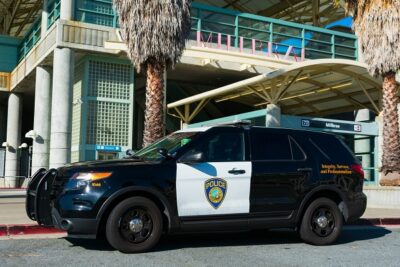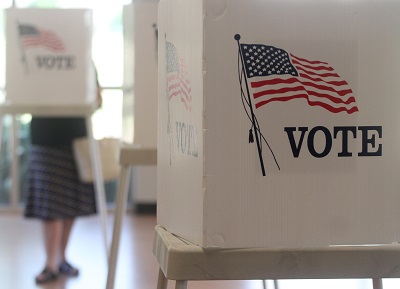Poll: Richmond Voters Feel Ignored by Regional Transportation Leaders, Overwhelmingly Support Opening Richmond-San Rafael Bridge Third Lane to Motorists
Eighty percent of Richmond voters support opening the third lane on the upper deck of the Richmond-San Rafael Bridge for carpools and transit to alleviate eastbound morning congestion that spills into city streets, according to a new poll the Bay Area Council released today (Dec. 8, 2023). The poll found a large majority of Richmond voters say that regional leaders do not care enough about the traffic in Richmond, and point to the bike lane on the bridge as a key example of that negligence.
Only 17% of Richmond voters say they have ever biked on the bridge. But those same bike riders also support opening the third lane to carpools and transit (78% support and 22% oppose). Even among cyclists who say they cross the bridge often, support for opening the third lane to automobiles is still very high at 72% support.
A coalition of Richmond community, religious and elected leaders has been working with the Bay Area Council, which commissioned the poll, over the past almost two years in calling on the Metropolitan Transportation Commission (MTC) to prioritize and accelerate planned improvements to the bridge and its approaches on both sides of the Bay. In particular, the coalition is demanding MTC and Caltrans reconfigure the third lane, which is currently reserved for bicycles and pedestrians, on the upper deck to open it to automobiles during the busy morning commute.
After a letter writing campaign where Richmond residents and bridge commuters wrote
19,259 letters to local elected officials, on November 8, the Bay Area Toll Authority Oversight Committee directed staff to start examining and planning for options to open the third lane to carpools and transit.
Each workday, 80,000 drivers cross the Richmond-San Rafael Bridge, and during the morning commute, approximately 18,000 Bay Area residents try to cross the Richmond-San Rafael Bridge in their car or pick-up truck going to work in Marin and Sonoma. The vast majority of them (63%) are people of color. Sixty-nine percent of them do not have a college degree, and the majority of them (60%) make less than Bay Area’s median income.
Virtually all of these drivers have no other practical means to get to work. Since they often come from very long distances and from all over the East Bay, biking, walking and public transit are not practical commute options.
As these 18,000 drivers approach the Richmond-San Rafael Bridge, they hit a very significant and growing traffic jam. During the peak hour, on average, they face 16 minutes of gridlocked, stop-and-go traffic. This traffic jam on the freeway also backs up local streets and roads in the city of Richmond, impacting many local families who aren’t even trying to get on the Richmond-San Rafael Bridge. This stop-and-go congestion produces 2-3 times the particulate and emissions pollution as a free-flowing freeway, according to research by the University of California. In the Bay Area, particulate matter and other emissions have been concentrated in poorer communities. The city of Richmond is 80% people of color, and lower income than the rest of the region.
The congestion and pollution from the backup are predicted to significantly worsen in the next two years, with a peak hour 15-minute delay-per-person-per-day growing to 24 minutes, meaning that unless something is done, in three years these drivers will spend 2 hours, per week, sitting in gridlock waiting to cross the Richmond-San Rafael Bridge in the morning. This will also further impact local streets and roads in Richmond.
According to 60% of those polled, traffic has only gotten worse in recent years, coinciding with the installation of the bicycle and pedestrian lane, which serves an estimated 21 cyclists every weekday morning. Meanwhile, an estimated 18,000 motorists cross the bridge every morning. The poll found the bike lane offers few benefits for Richmond residents, with 83% saying they never use it. And 85% of those surveyed agreed that dedicating the third lane only for bicycle and pedestrian use doesn’t make sense when so few people use it.
“The message from Richmond voters is loud and clear, they want action now to ease traffic congestion that is unfairly disrupting their lives and their neighborhoods,” said John Grubb, Chief Operating Officer for the Bay Area Council. “There are sensible solutions and even funding that exist now to fix this problem. What is needed is the political will to make it happen and get it done. There’s just no excuse for delaying changes that can bring immediate traffic relief and ease the impact of dirty air on Richmond families, particularly on kids, seniors and others with respiratory problems.”
Concerns about air pollution stemming from traffic backups are significant. The poll found 78% of Richmond voters believe opening the third lane to transit and carpools in the morning can reduce congestion from idling vehicles. Concerns about air pollution in Richmond is extremely high, the poll found, with 67% of those polled ranking it either a 4 or 5 on a scale of 1 to 5, with 5 representing extreme concern.
There’s good evidence that opening the third lane on the upper deck can work to ease congestion. A 2016 project to open the third eastbound lane on the lower deck of the bridge to motorists and address massive traffic snarls on Marin local streets and Highway 101 was hugely successful. For 80% of those polled in Richmond, that’s a convincing argument for doing the same on the upper deck.
The poll, conducted by Change Research, also found strong support for removing inactive toll booths on the eastern approach that play a role in slowing down the commute, with 81% saying they should be removed.





